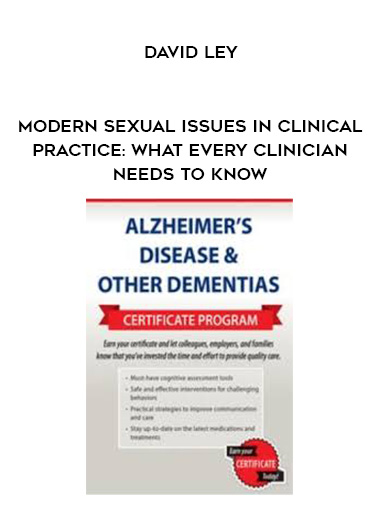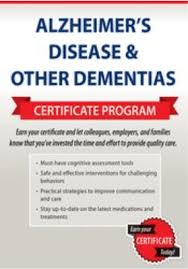
Many clients feel intense shame, guilt and moral conflict over sexual interests that are considered ‘abnormal.” Sexual concerns can have a drastic impact on a person’s mood, thoughts and overall mental health. Clinicians who don’t address sexuality in therapy are missing a critical component that would help their clients live happier lives and have healthier relationships.
Improve your client’s overall mental health and life satisfaction by integrating sexual health interventions into your practice!
In this recording, Dr. David Ley, PhD, walks you through the navigation of some of the most complex sexual issues that you’ll face as a clinician. You’ll walk away with the skills you need to address all of the issues below in therapy – and more!
- Appropriately assess the healthiness of your clients’ sexual interests
- Guide clients as they explore their ambivalence regarding issues such as pornography, casual sex and nonmonogamy
- Confidently assist clients who are unsure of their sexual orientation
- Help clients who have become socially isolated because of shame and fear regarding their sexual interests
- Strategies to help teens who are being bullied or harassed because of sexting
Learn to effectively navigate issues of sexuality in your practice!
- Integrate clinical harm-reduction strategies in session in order to reduce the client risk associated with sexting.
- Utilize clinical interventions to resolve moral and religious conflicts about pornography use in clients to improve clinical outcomes.
- Develop an increase in clients’ sexual integrity and self-control through shame-reduction treatment interventions.
- Distinguish between healthy sexual diversity and sexual symptoms of emotional disturbance related to PTSDS, anxiety, depression and personality disorders.
- Apply a nonjudgmental diagnostic framework toward a client’s sexual interests and behaviors.
- Implement techniques for helping clients and their families understand and contextualize their sexuality in order to reduce sexuality-related fear and shame.
Assessment of Sexual Health Issues
- The impact of the Internet on sexuality
- Sexuality’s impact on presenting issues
- Self-assessment strategies for clinician bias
- Treat sex like a behavior – not a disease
- Allow the client to explore ambivalence
- Is sex a cause or symptom?
- Holistic perspective to evaluating sexuality
- Principle-based model of sexual health
- Assessment tool: Sexual sensation seeking scale
- Sex addiction
- Limitations of research & potential risks
Sexting: Assist Teens & Adults with the Safe Use of Technology
- Sex, technology & changing social values
- Legal ramifications of teen sexting
- Sexting’s impact on body image
- Mitigate effects of bullying, harassment & exploitation
- Educate teens about safety & responsibility
- Help teens choose a “cyber buddy”
- Harm-reduction strategies for sexting
- Case Studies: Teen sexting & adult sexting
Pornography: Help Clients Achieve Healthy Use of Pornography
- Resolve moral/religious conflicts about porn use
- Assess ideals of sexual property within relationships
- Assist couples in negotiating boundaries around pornography use
- Minimize attention & focus on problems
- Help clients take proactive steps to make values-consistent decisions easier
- Strategies for healthy porn use
- Case Studies: Healthy & unhealthy porn use
Casual Sex: Strategies to Help Clients Balance Values & Sexual Activity
- Casual sex & its implications for depression
- Shame, stigma & female sexuality
- Help clients evaluate their values
- Determine the benefits of casual sex for the client
- Help clients determine if casual sex is right for them
- Shame reduction strategies
- Case Studies: Casual sex, shame & values
Consensual Nonmonogamy: Navigate the Complexities of Non-Traditional Relationships
- Types of open relationships
- The impact of nonmonogamy on families, children & mental health
Issues to Address in Therapy
- Is nonmonogamy right for the relationship?
- Create boundaries
- Time sharing
- Communication
- Jealousy triggers
- Case Studies: Stressors on non-monogamous relationships; polyamorous and swinging relationships
Sexual Orientations: Confidently Address Sexual Issues of Unique Clinical Populations
- Gender vs sexuality
- The blurring line between heterosexuality & homosexuality
- How is orientation determined?
- What does the term mean to your client?
- Understand the function of the term for the client
- Assist clients with understanding orientation as part of their healthy sexuality
- Support transgender kids & teens in therapy
- Case Studies: Transgender teens; sexual fluidity
BDSM & Kink: Nonjudgmentally Discuss Personal Sexual Issues with Clients
- Paraphilic disorders vs paraphilia
- Common misconceptions
- Ask, “What does BDSM/Kink mean to you?”
- Separate trauma from BDSM in therapy
- Address unwanted fantasies & fetishes
- Educate clients about healthy sexuality
- Help clients negotiate boundaries & consent
- Case Studies: What’s the real problem here?


































Reviews
There are no reviews yet.